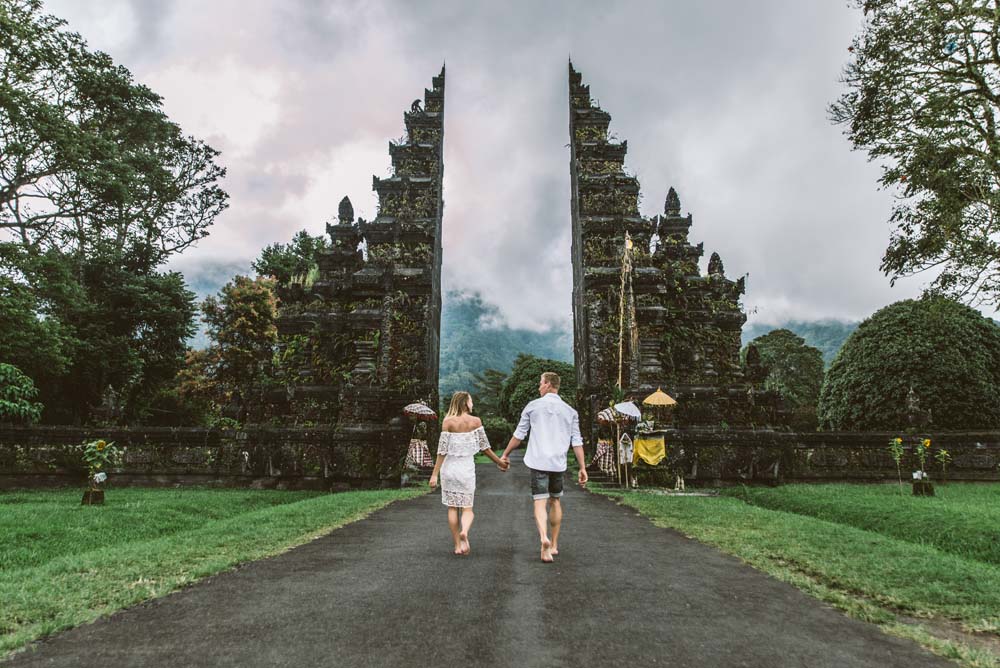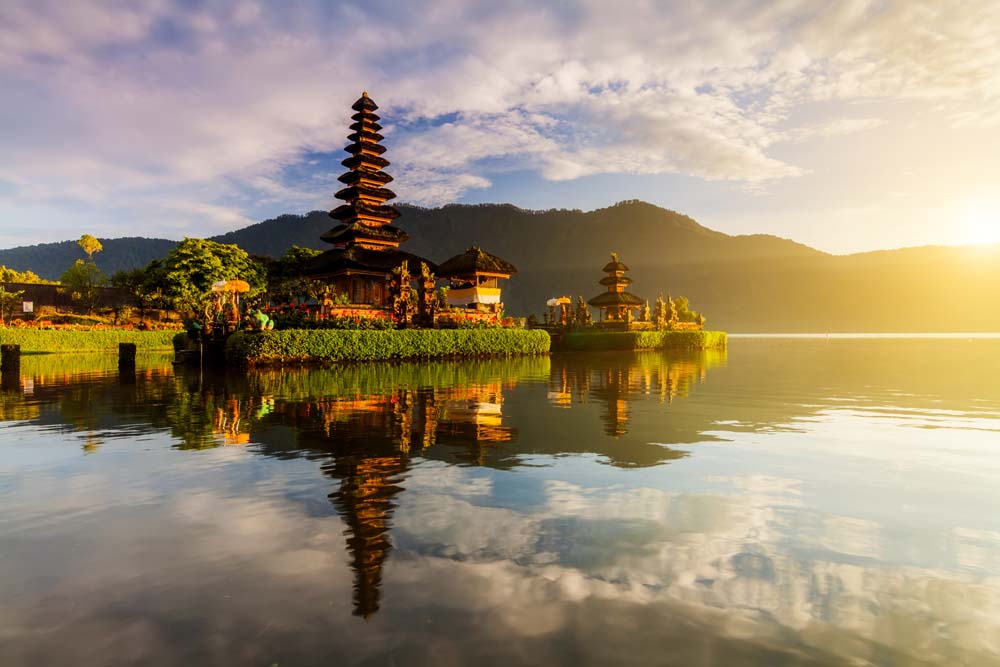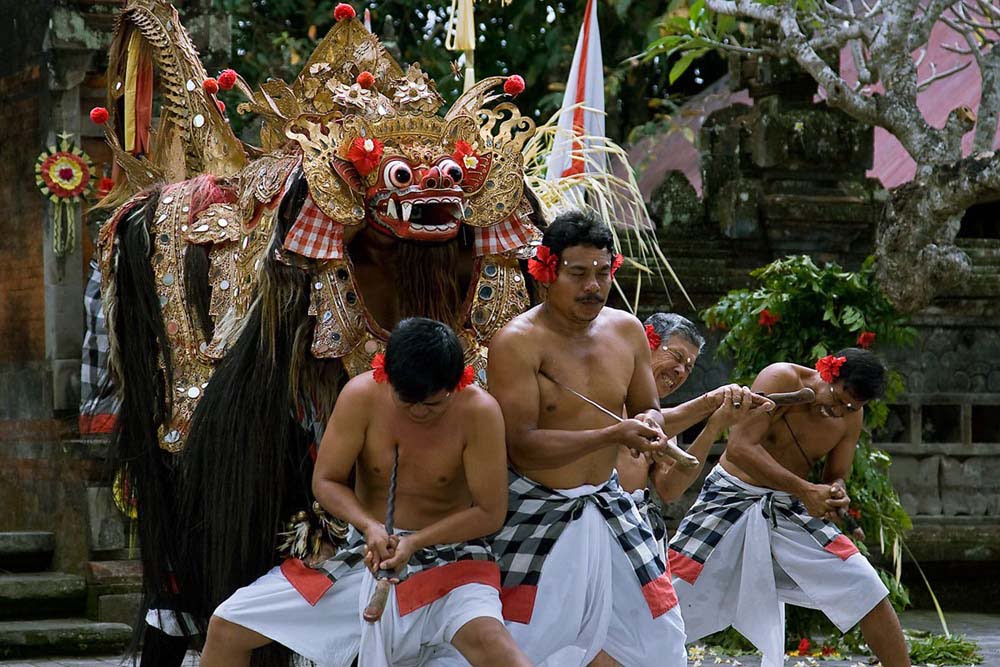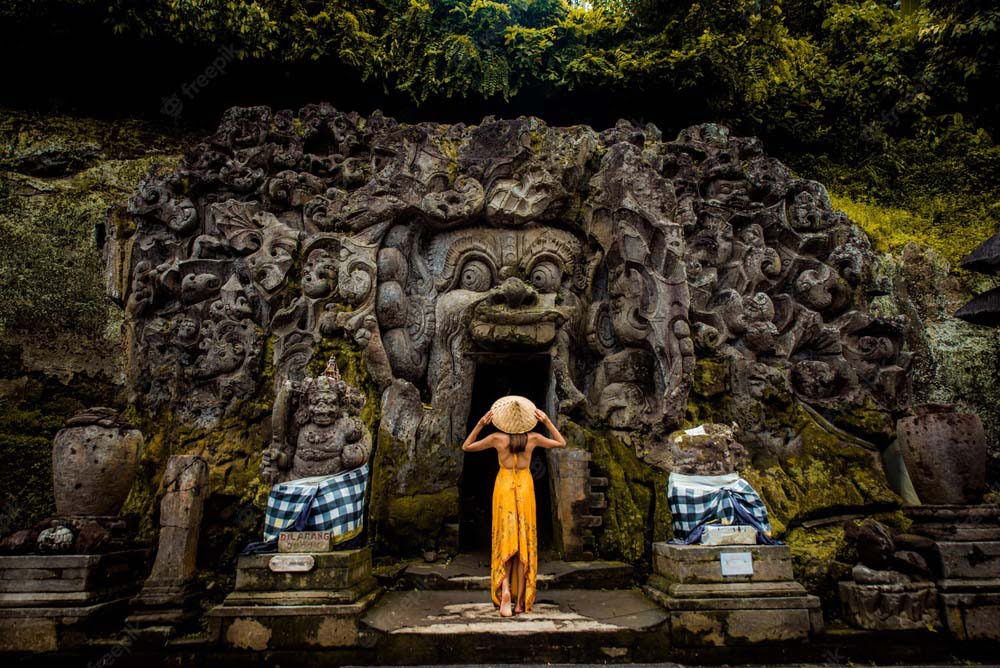





















The island of Bali lies 3.2 km (2.0 mi) east of Java, and is approximately 8 degrees south of the equator. Bali and Java are separated by the Bali Strait. East to west, the island is approximately 153 km (95 mi) wide and spans approximately 112 km (70 mi) north to south; administratively it covers 5,780 km2 (2,230 sq mi), or 5,577 km2 (2,153 sq mi) without Nusa Penida District,[38] which comprises three small islands off the southeast coast of Bali. Its population density was roughly 747 people/km2 (1,930 people/sq mi) in 2020.
The island of Bali lies 3.2 km (2.0 mi) east of Java, and is approximately 8 degrees south of the equator. Bali and Java are separated by the Bali Strait. East to west, the island is approximately 153 km (95 mi) wide and spans approximately 112 km (70 mi) north to south; administratively it covers 5,780 km2 (2,230 sq mi), or 5,577 km2 (2,153 sq mi) without Nusa Penida District,[38] which comprises three small islands off the southeast coast of Bali. Its population density was roughly 747 people/km2 (1,930 people/sq mi) in 2020.
Bali’s central mountains include several peaks over 2,000 metres (6,600 feet) in elevation and active volcanoes such as Mount Batur. The highest is Mount Agung (3,031 m, 9,944 ft), known as the “mother mountain”, which is an active volcano rated as one of the world’s most likely sites for a massive eruption within the next 100 years.[39] In late 2017 Mount Agung started erupting and large numbers of people were evacuated, temporarily closing the island’s airport.[40] Mountains range from centre to the eastern side, with Mount Agung the easternmost peak. Bali’s volcanic nature has contributed to its exceptional fertility and its tall mountain ranges provide the high rainfall that supports the highly productive agriculture sector. South of the mountains is a broad, steadily descending area where most of Bali’s large rice crop is grown. The northern side of the mountains slopes more steeply to the sea and is the main coffee-producing area of the island, along with rice, vegetables, and cattle. The longest river, Ayung River, flows approximately 75 km (47 mi) (see List of rivers of Bali).
The island is surrounded by coral reefs. Beaches in the south tend to have white sand while those in the north and west have black sand. Bali has no major waterways, although the Ho River is navigable by small sampan boats. Black sand beaches between Pasut and Klatingdukuh are being developed for tourism, but apart from the seaside temple of Tanah Lot, they are not yet used for significant tourism.
The largest city is the provincial capital, Denpasar, near the southern coast. Its population is around 725,000 (2020). Bali’s second-largest city is the old colonial capital, Singaraja, which is located on the north coast and is home to around 150,000 people in 2020.[41][2] Other important cities include the beach resort, Kuta, which is practically part of Denpasar’s urban area, and Ubud, situated at the north of Denpasar, is the island’s cultural centre.[42]
Three small islands lie to the immediate south-east and all are administratively part of the Klungkung regency of Bali: Nusa Penida, Nusa Lembongan and Nusa Ceningan. These islands are separated from Bali by the Badung Strait.
To the east, the Lombok Strait separates Bali from Lombok and marks the biogeographical division between the fauna of the Indomalayan realm and the distinctly different fauna of Australasia. The transition is known as the Wallace Line, named after Alfred Russel Wallace, who first proposed a transition zone between these two major biomes. When sea levels dropped during the Pleistocene ice age, Bali was connected to Java and Sumatra and to the mainland of Asia and shared the Asian fauna, but the deep water of the Lombok Strait continued to keep Lombok Island and the Lesser Sunda archipelago isolated.

Subscribe now and be the first to know about our special deals, promotions and offers!
Type your keyword on the search box below.
This will close in 0 seconds
